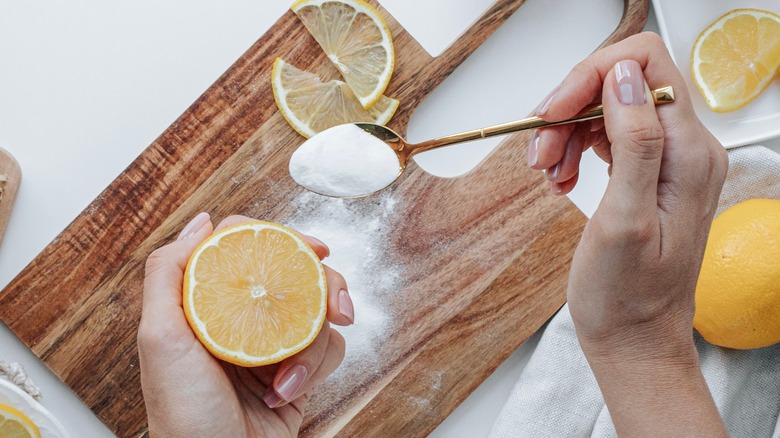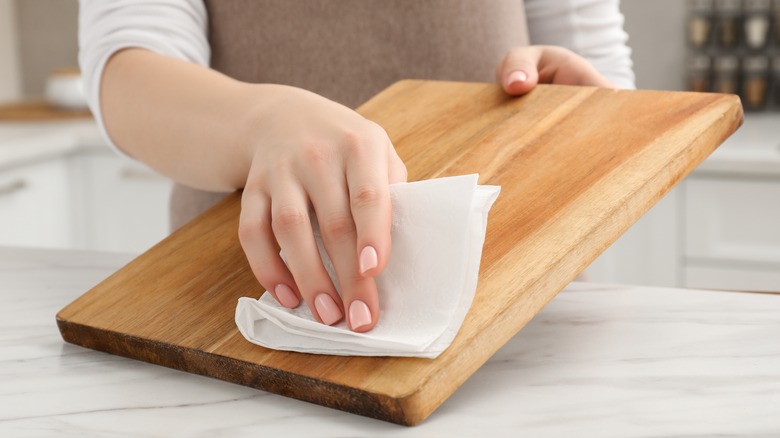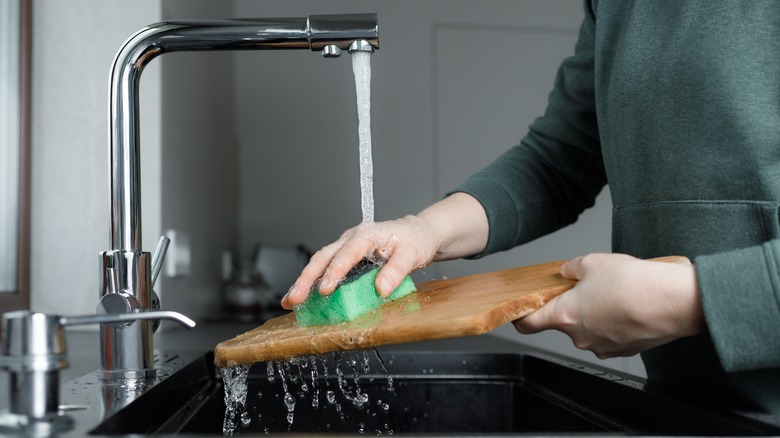Think Twice Before Cleaning Your Wooden Cutting Boards With A Lemon
When it comes to kitchen tools, a cutting board is an unexpected MVP — it's not as flashy as the knives that seamlessly slice its surface almost daily, but it plays an equally important role in preparing our food. Whether or not you decide to invest in Ina Garten's favorite cutting board or similarly luxurious brands, it's worthwhile to learn how to care for this particular piece of culinary equipment properly. If you have a wooden cutting board, you may have heard you should clean it with half a fresh lemon and some salt or baking soda. While this method does have its merits, it also has some significant downsides.
Lemons are ideal for cleaning all kinds of materials due to their natural acidity, which lends to their antibacterial properties. This same quality, however, can have a corrosive effect on certain materials. While citrus can clean other types of cutting boards so that they sparkle, it may cause wood to develop a dull appearance or even warp its shape.
Why it's important to correctly clean your cutting board
If you've ever wondered whether you should use a wood or plastic cutting board, you have probably already given some thought to the challenges and importance of cleaning this kitchen staple. Because we utilize cutting boards for such a diverse range of ingredients — from fresh vegetables to raw meats — it's critical that this tool is properly sanitized between uses to avoid cross-contamination. Otherwise, bacteria like E.coli and salmonella can grow and spread to your food, causing foodborne illnesses. Wooden cutting boards should not be placed in the dishwasher, so you need to take extra care to disinfect them by hand.
The porous consistency of wooden cutting boards means that they are highly absorbent. This is one reason that using a lemon to clean them can pose some issues. Wooden boards may take on the tart taste of lemon juice, which can impact the flavor of your food. They may also hold onto the moisture of the lemon juice. Since damp environments breed bacteria, you should place your wooden board somewhere that it can fully dry after every use.
Tips for cleaning and caring for wooden cutting boards
You do not need fresh fruit or any fancy products to clean your wooden cutting board. The easiest option is to scrub it with a sponge, hot water, and your usual dishwashing soap. In this case, unscented cleaning supplies are ideal, so your board maintains a neutral smell and does not negatively affect your cooking. If your board does become infused with the aroma of pungent ingredients like garlic or onions, salt or baking soda can be used instead of soap for a more targeted deep cleaning. This technique can also help remove stains from colorful foods like beets or turmeric.
Besides cleaning your wooden cutting board, you will also want to make sure to regularly oil it, too. To do so, stay away from cooking oils (which can quickly go rancid) and opt for food-grade mineral oil or beeswax instead. Properly oiling your wooden board about once a month will help maintain its appearance and safety.



